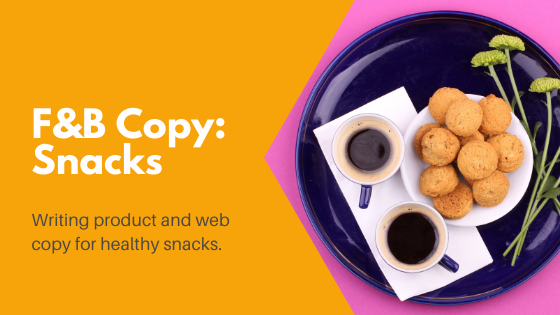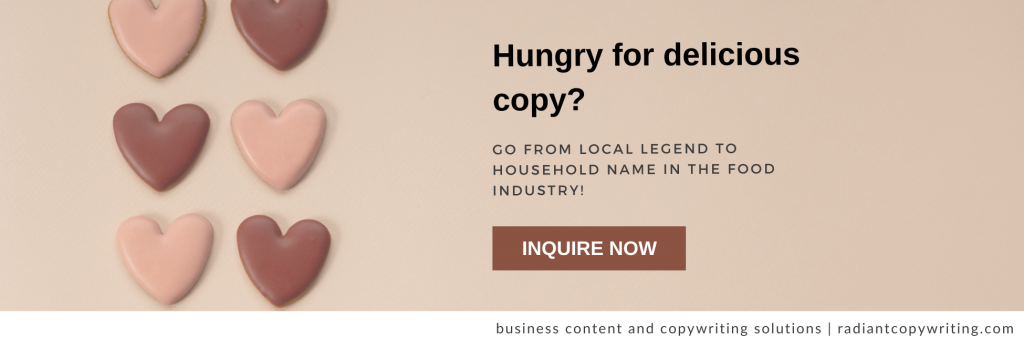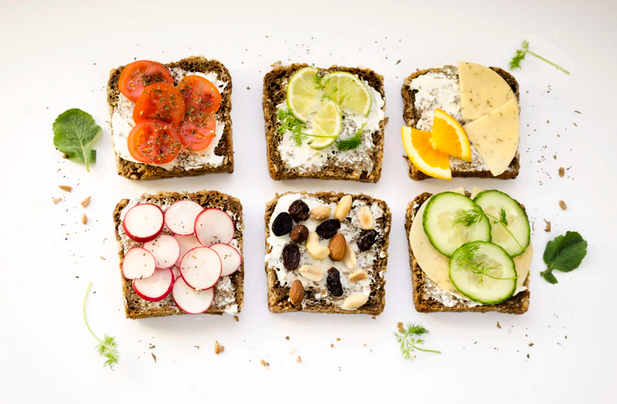Food copywriting considerations – the healthy snack edition!

Consumers these days are becoming more health-conscious. And who can blame them, with the rise of lifestyle diseases like diabetes and hypertension?
That’s why today’s consumers are placing a premium on health and wellness, which means making the shift to a heart-healthy diet and purchasing healthier foods—including snacks.
Take a look at these healthy snack food stats
It’s a great time to be in the better-for-you (BFY) snacks and food products business. I mean, just take a look at these encouraging statistics:
- In 2018, the global healthy snacks market size was valued at USD 23.05 billion (Source)
- 6 out of 10 consumers buy snacks as part of their weekly grocery shopping (Source)
- 57% of consumers go so far as to replace meals with snacks (Source)
- 89% of Millennials eat at least one better-for-you snack per week (Source)
- The healthy snacks market is expected to reach USD 32.88 billion globally by 2025 (Source)
BFY foods are those that have a healthier nutritional profile, address health-related dietary needs, or come in portion-controlled serving sizes. But just because something’s “better for you” doesn’t mean it’s automatically easier to attract shoppers, increase sales, or grow a food business.

Fact is, the healthy snacks market is incredibly competitive—new players with innovative ideas are emerging all the time. And, with generally pricier products, better-for-you snack manufacturers are on double duty: They have to attract shoppers and simultaneously justify the higher price tag.
In short, to succeed, healthy snack manufacturers need a winning combination of:
- a tasty product made with the right ingredients;
- eye-catching packaging;
- and copywriting that resonates with shoppers.

Healthy snack copywriting considerations for small businesses
It’s not enough for snack manufacturers to invest in high quality, mouth-watering food imagery. Equally important is what you write about your products—on product packaging, your website, online stores (product copy), and on social media.
Here’s why: The right words are powerful enough to elicit an emotional and physical response for your product. That is, say the right thing and you can get people not just craving your item, but actually adding to cart!
In short, expert food copywriting is indispensable.
So how do you craft great web, product, and packaging copy for your range of healthy snack foods?
Here are the nuts and bolts to consider before you put pen to paper.
Web content: What do you need?
Whether you’re in the process of building your brand website or looking for ways to improve performance and / or reader engagement, take a moment to think about the content you actually need online.
For example:
- What kind of information will your customers be looking for?
- How do you convince people to give your food product a try?
- What kind of content will improve your SEO and therefore discoverability on the internet?
Tip: Don’t forget to define your brand voice
An important step in the process of launching your first food product is deciding on the tone, voice, and style you want for your brand. This will be visible across all your marketing touch points, so it should be thought about carefully.
Your brand voice should preferably align with other marketing elements such as graphical components, design, and packaging—you want a cohesive look and feel, not dissonance. It’d be strange to have a youthful voice but super serious packaging.
Also, while there’s room for flexibility depending on the occasion, your brand voice should, ideally, be consistent. This is where developing brand voice guidelines comes in handy.

Product copy: Who are your products for?
As you were developing your assortment of healthy snack foods, you must have had particular buyer groups that you would target in mind.
For example: You’re going to sell low-sugar baked treats for kids or you’ve developed various rice-based snacks for individuals with celiac disease.
Your product copy—product descriptions, copy for product pages, or even packaging copy—should be oriented towards your end consumer.
Here are a few questions to guide you:
- Who are your ideal customers?
- Are they already somewhat familiar with your type of product?
- What are their needs, wants, preferences, and priorities when it comes to snacks?
- How will you attract their attention and appeal to them?
- How will they consume these snacks?
Tip: Compile a list of adjectives to describe your snack
Communicating what customers can expect in terms of taste and texture can be of immense value in generating interest for your snack. Start by brainstorming a list of relevant sensory words in addition to other adjectives you can use for product descriptions or on packaging.
For example: ‘crunchy’, ‘fruity’, ‘light’, and so on.
You want to grab shoppers’ attention, pique their interest, and get them to add the item to (virtual or real) cart!
And for your digital assets, don’t forget to do your keyword research for powerful SEO!
Packaging: How much space do you have?
A product’s packaging and design elements will impact what you write—and just how much of it.
For example: If your snack will be sold individually – that is, not in a box – you would have less space to work with.
In that case, priority will be given to all legally-required components such as nutritional information, ingredients list, allergens, expiration / best-by dates, and so on.
You won’t be left with much space after that so you’ll have to be extra thoughtful of your food packaging copy. Your goal is to make the greatest impact given the limited space you have.
Struggling to find the right words for your healthy snack website, product description, or product packaging? Does what you’ve written sound boring, lackluster, or just a little too much like the competition? Then it’s time to hire a food copywriter! Get in touch today for more information.